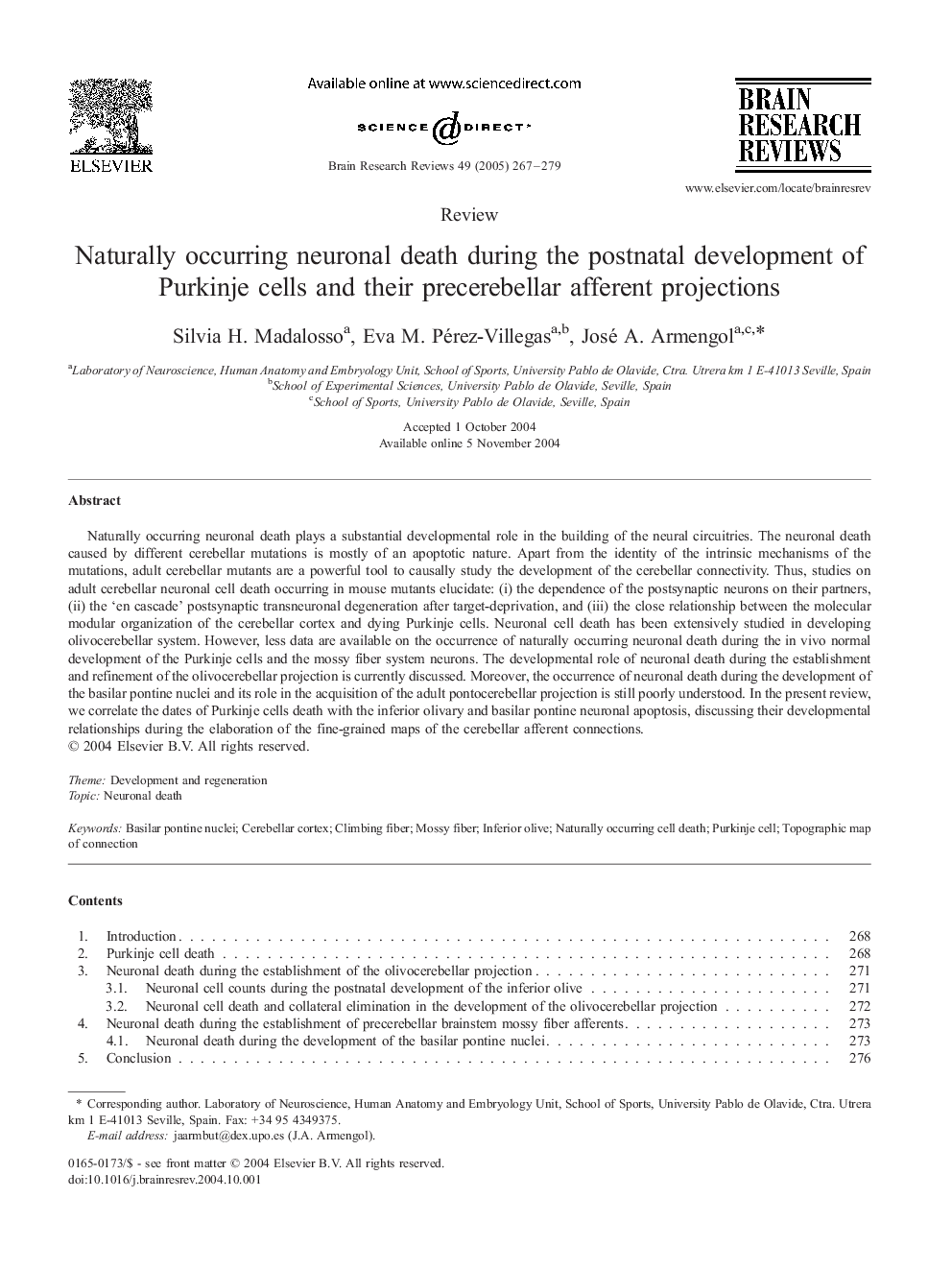| Article ID | Journal | Published Year | Pages | File Type |
|---|---|---|---|---|
| 9423082 | Brain Research Reviews | 2005 | 13 Pages |
Abstract
Naturally occurring neuronal death plays a substantial developmental role in the building of the neural circuitries. The neuronal death caused by different cerebellar mutations is mostly of an apoptotic nature. Apart from the identity of the intrinsic mechanisms of the mutations, adult cerebellar mutants are a powerful tool to causally study the development of the cerebellar connectivity. Thus, studies on adult cerebellar neuronal cell death occurring in mouse mutants elucidate: (i) the dependence of the postsynaptic neurons on their partners, (ii) the 'en cascade' postsynaptic transneuronal degeneration after target-deprivation, and (iii) the close relationship between the molecular modular organization of the cerebellar cortex and dying Purkinje cells. Neuronal cell death has been extensively studied in developing olivocerebellar system. However, less data are available on the occurrence of naturally occurring neuronal death during the in vivo normal development of the Purkinje cells and the mossy fiber system neurons. The developmental role of neuronal death during the establishment and refinement of the olivocerebellar projection is currently discussed. Moreover, the occurrence of neuronal death during the development of the basilar pontine nuclei and its role in the acquisition of the adult pontocerebellar projection is still poorly understood. In the present review, we correlate the dates of Purkinje cells death with the inferior olivary and basilar pontine neuronal apoptosis, discussing their developmental relationships during the elaboration of the fine-grained maps of the cerebellar afferent connections.
Keywords
Related Topics
Life Sciences
Neuroscience
Neuroscience (General)
Authors
Silvia H. Madalosso, Eva M. Pérez-Villegas, José A. Armengol,
